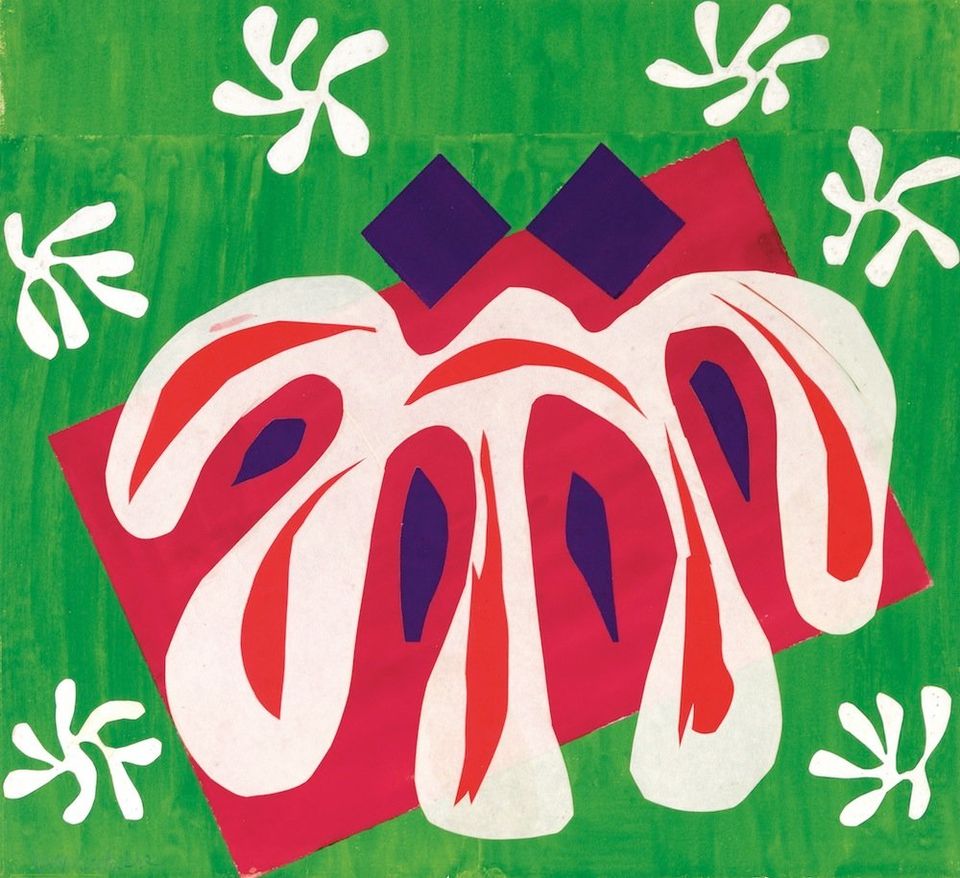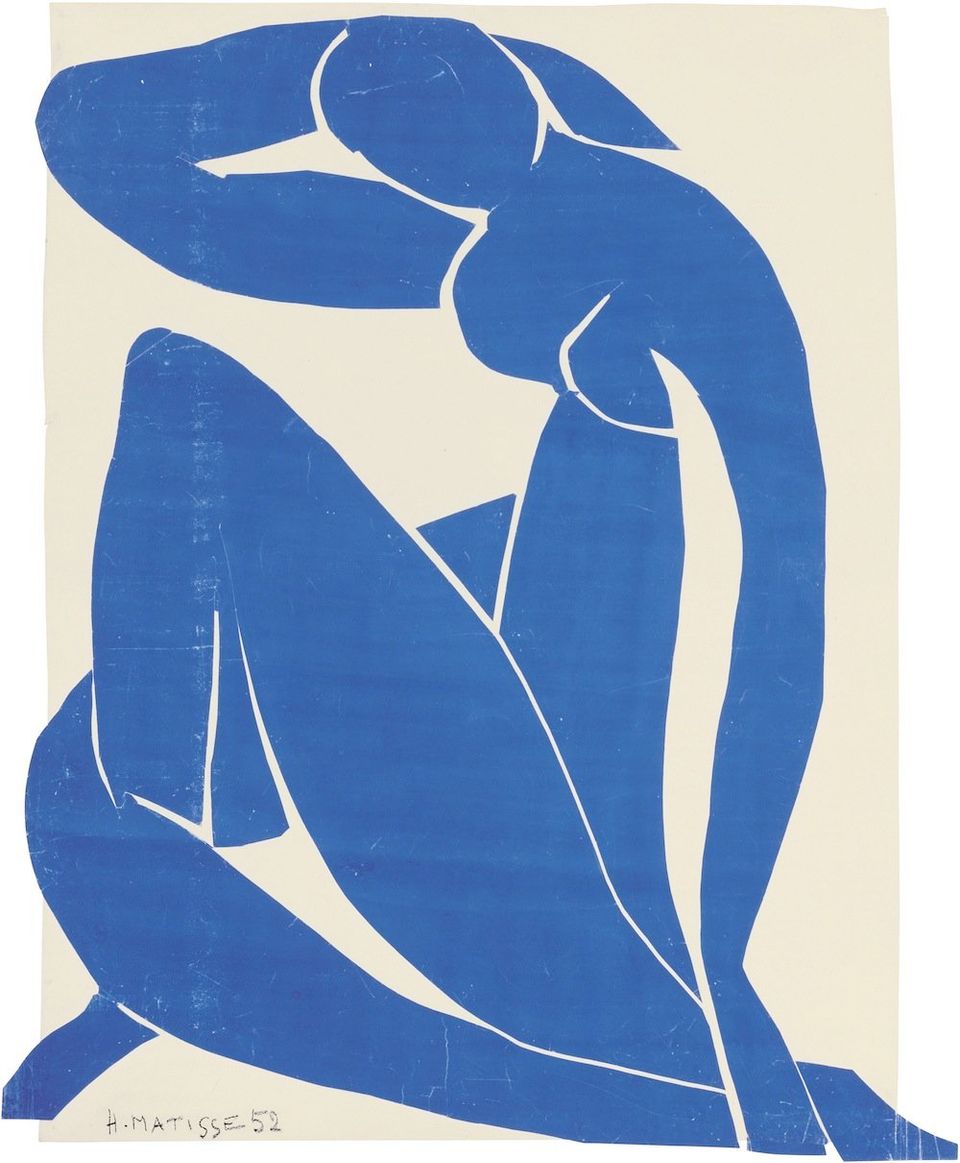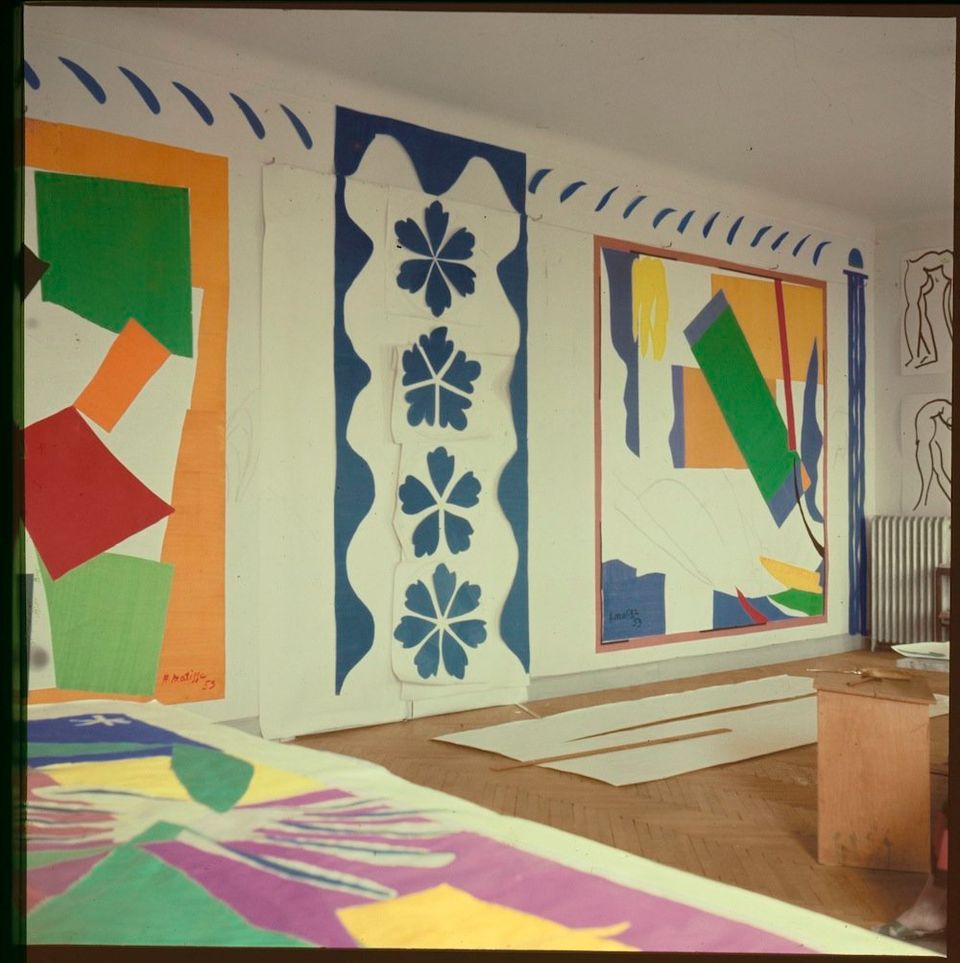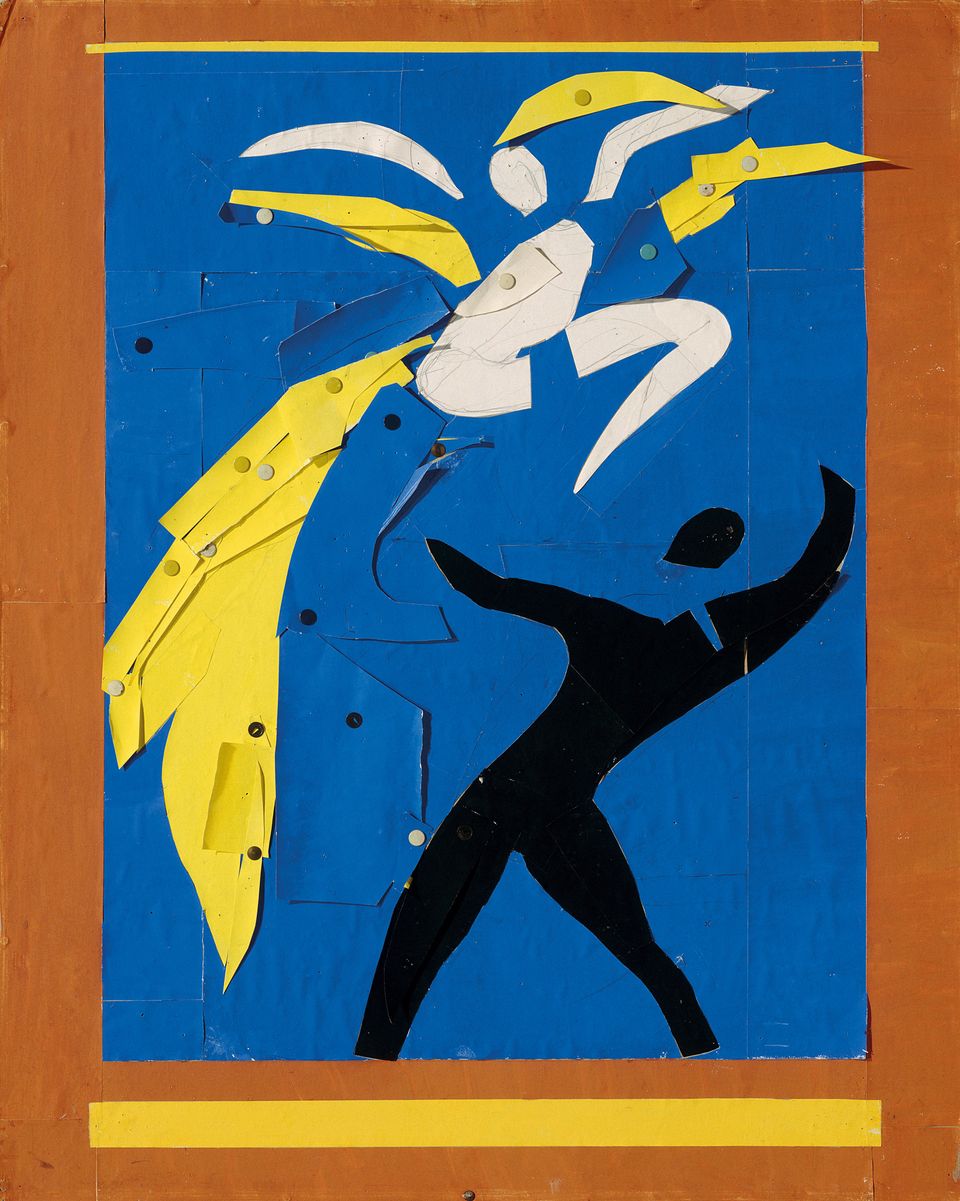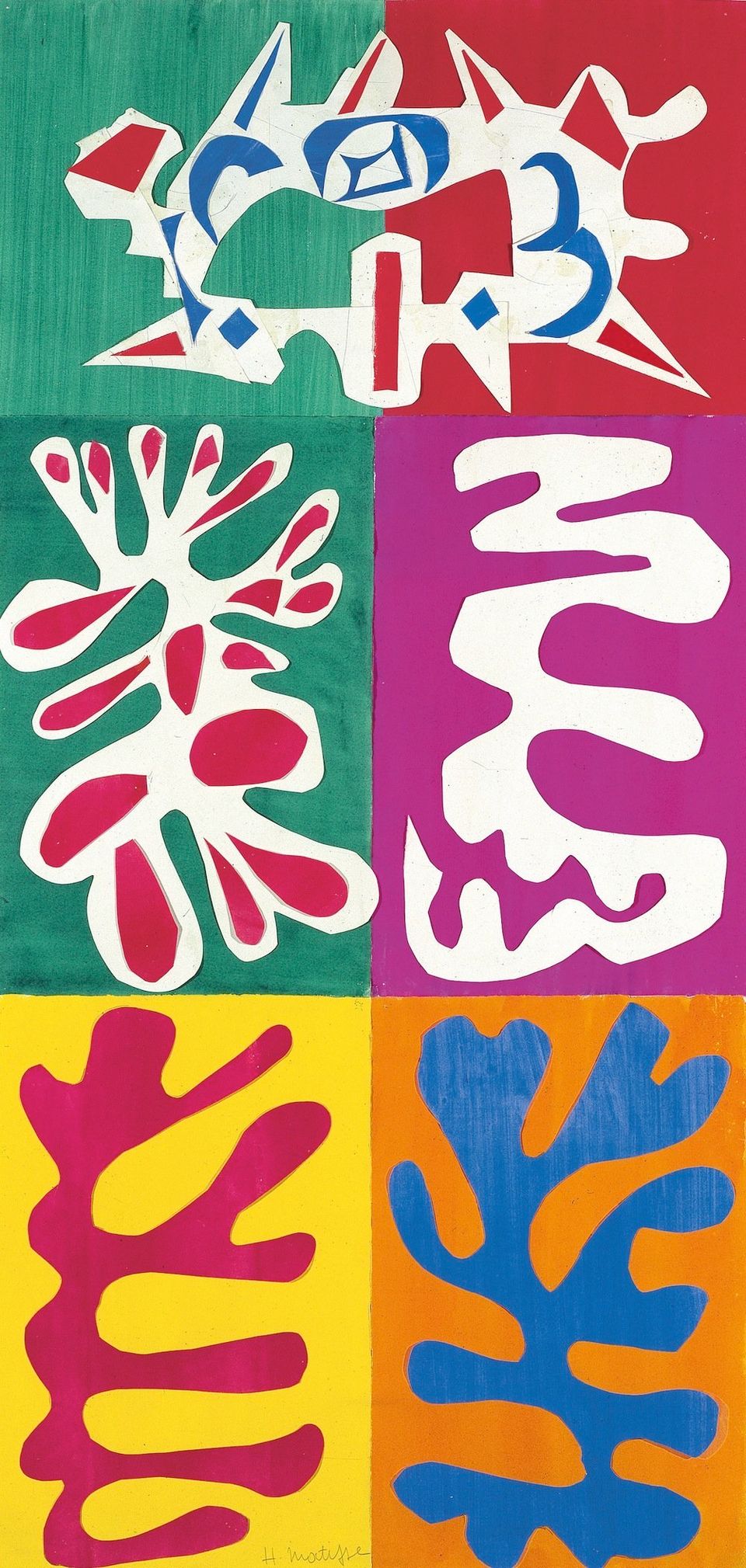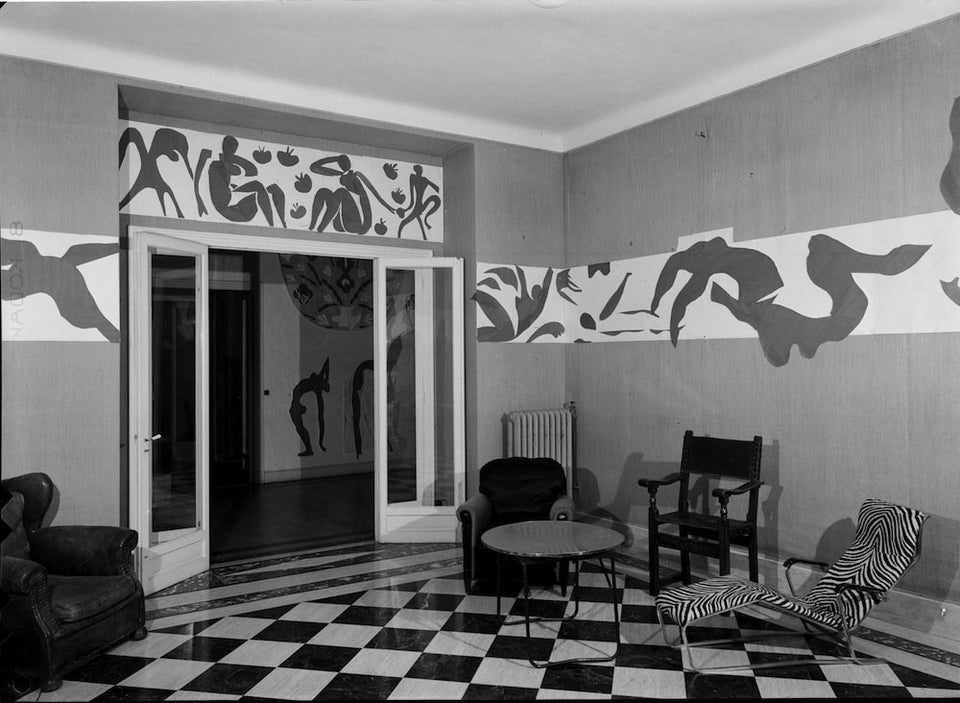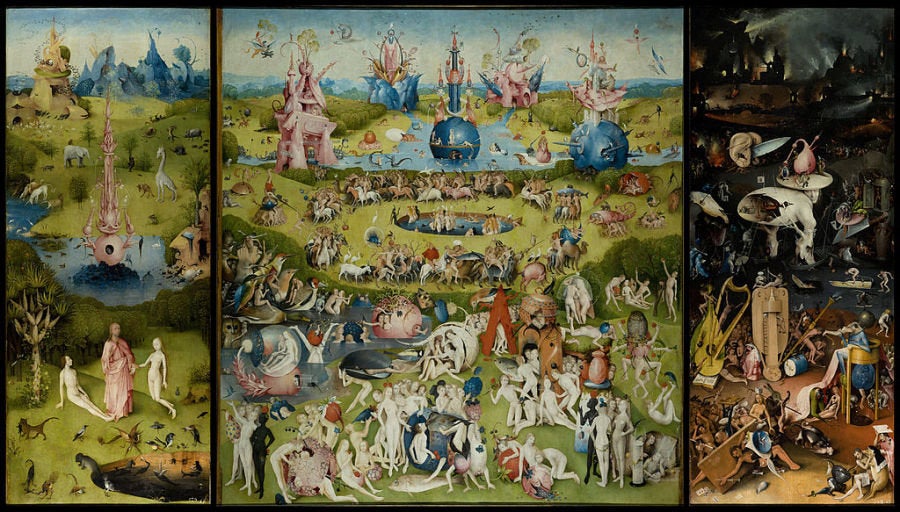Today is the birthday of French painter, printmaker, sculptor, and scissor-wielder extraordinaire, Henri Matisse. The Fauvist artist and original sporter of round spectacles would turn 145 if he were miraculously alive today.

Matisse in front of gouache-painted papers, Hôtel Régina, Nice. Photo: Lydia Delectorskaya. © 2014 Succession H. Matisse
On this most holy of art holidays, we're celebrating with "The Cut-Outs," Matisse's current exhibition at the Museum of Modern Art. The exceptional show spans the final phase of Matisse's life, from the late 1940s until his death in 1954, when the color-happy artist revolutionized the future of art by creating paintings with neither paint nor canvas. Instead, the artist painted with scissors, creating flattened abstractions buzzing with life, proudly residing in the realms of both adornment and fine art, object and environment.
Prior to his cut-outs moment, Matisse was a leader of les Fauves, French for "the wild beasts," a group of modern artists that privileged the expressive power of color and shape above allegiances to nature and reality. Matisse, along with artists like André Derain and Jean Metzinger, employed abstraction and electrified pigments to create artworks that, rather than mirror reality, surpassed it.
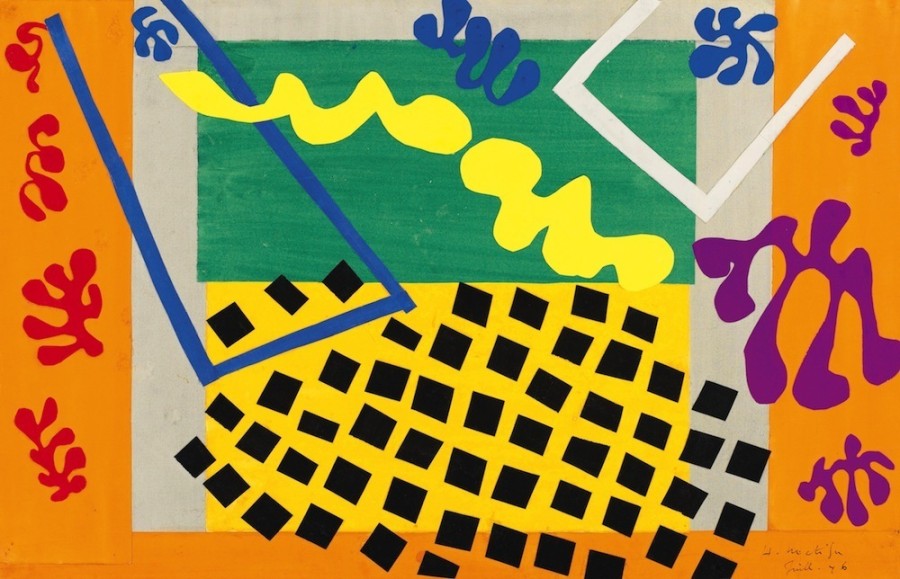
Henri Matisse (French, 1869-1954). The Codomas (Les Codomas), 1943. Maquette for plate XI from the illustrated book Jazz (1947). Gouache on paper, cut and pasted, mounted on canvas. 17 1/8 x 26 3/8” (43.5 x 67.1 cm). Musée national d’art moderne/Centre de création industrielle, Centre Georges Pompidou, Paris. Dation, 1985. © 2014 Succession H. Matisse / Artists Rights Society (ARS), New York
Matisse's cut-outs were, in a way, the final phase of this artistic venture, the culmination of his lifelong mission to paint with pure color and shape. The artist cut painted sheets into shapes -- some edgy and geometric, others more organic -- yielding flattened color-scapes that point to the infinite possibilities of artistic potential, the endless combinations of color and shape that extend beyond those visible in the physical world.
As Jerry Saltz so beautifully expressed in his review, "With The Cut-Outs, Matisse crosses a mystical bridge. One of the true inventors of Modernism, he stands at the precipice and points to a way beyond it, to a pre-digitalized space, where pixels and separate segments of color and line form images, where painting seems to exist even where there is no paint and no canvas. With The Cut-Outs, Matisse goes beyond the romantic notion of the self-mythologizing agonized male genius. With The Cut-Outs, all we see is the work; only process is present; process and something as close to pure beauty in all of Western art."
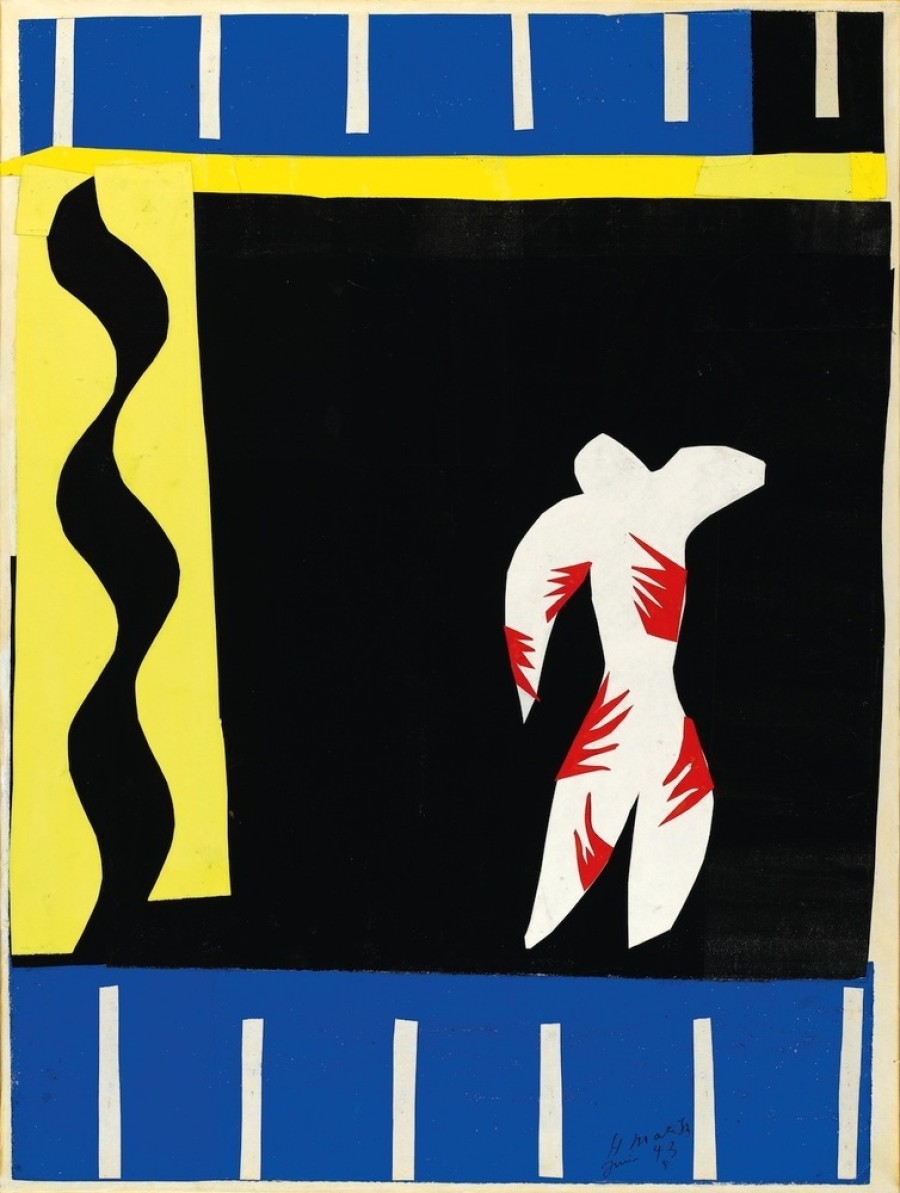
Henri Matisse (French, 1869-1954). The Clown (Le Clown), 1943. Maquette for plate I from the illustrated book Jazz (1947). Gouache on paper, cut and pasted, mounted on canvas. 26 7/16 x 19 15/16” (67.2 x 50.7 cm). Musée national d’art moderne/Centre de création industrielle, Centre Georges Pompidou, Paris. Dation, 1985. © 2014 Succession H. Matisse / Artists Rights Society (ARS), New York
Despite the works' cheery appearance, they were made during a period of intense suffering for Matisse. Rendered unable to paint traditionally due to deteriorating health, he created his cut-outs while confined to a bed or wheelchair, enlisting assistants to help him and using a long stick to draw and point. Despite the physical agony Matisse endured during the works' creation, they appear as boundless and carefree as wild beasts frolicking in a color field. The pre-internet works operate almost as a proto-Second Life, offering a not-quite-virtual space for limited humans to experience infinite freedom.
It's also, for those who prefer to remain offline, one of the great powers of art. Happy birthday, Matisse! Your wild colors and strokes never fail to put smiles on our faces. We're thinking of you today.
"Henri Matisse: The Cut-Outs" runs until February 10, 2015 at the Museum of Modern Art in New York. See a preview below.
Henri Matisse (French, 1869-1954). Two Masks (The Tomato) (Deux Masques [La Tomate]), 1947. Gouache on paper, cut and pasted. 18¾ x 20 3/8 (47.7 x 51.8 cm). Mr. and Mrs. Donald B. Marron, New York. © 2014 Succession H. Matisse / Artists Rights Society (ARS), New York
Henri Matisse (French, 1869-1954). Blue Nude II (Nu bleu II), spring 1952. Gouache on paper, cut and pasted, on white paper, mounted on canvas. 45 ¾ x 35” (116.2 x 88.9 cm). Musée national d’art moderne/Centre de création industrielle, Centre Georges Pompidou, Paris. Purchase, 1984. © 2014 Succession H. Matisse / Artists Rights Society (ARS), New York
Matisse’s studio, Hôtel Régina, Nice, c. 1953. Photo: Lydia Delectorskaya. © 2014 Succession H. Matisse
Henri Matisse (French, 1869-1954). Two Dancers (Deux danseurs), 1937-38. Stage curtain design for the ballet Rouge et Noir. Gouache on paper, cut and pasted, notebook papers, pencil, and thumbtacks. 31 9/16 x 25 3/8” (80.2 x 64.5 cm). Musée national d’art moderne/Centre de création industrielle, Centre Georges Pompidou, Paris. Dation, 1991. © 2014 Succession H. Matisse / Artists Rights Society (ARS), New York
Henri Matisse (French, 1869-1954). Panel with Mask (Le Panneau au masque), 1947. Gouache on paper, cut and pasted. 43 5/16 x 20 7/8” (110 x 53 cm). Designmuseum Danmark. © 2014 Succession H. Matisse / Artists Rights Society (ARS), New York
Henri Matisse (French, 1869-1954). Zulma, early 1950. Gouache on paper, cut and pasted. 93 11/16 x 52 3/8″ (238 x 133 cm). Statens Museum for Kunst, Copenhagen. © 2014 Succession H. Matisse / Artists Rights Society (ARS), New York
Hôtel Régina, Nice, 1953. Photo: Hélène Adant. Centre Pompidou – MnamCci – Bibliothèque Kandinsky
Support HuffPost
Our 2024 Coverage Needs You
Your Loyalty Means The World To Us
At HuffPost, we believe that everyone needs high-quality journalism, but we understand that not everyone can afford to pay for expensive news subscriptions. That is why we are committed to providing deeply reported, carefully fact-checked news that is freely accessible to everyone.
Whether you come to HuffPost for updates on the 2024 presidential race, hard-hitting investigations into critical issues facing our country today, or trending stories that make you laugh, we appreciate you. The truth is, news costs money to produce, and we are proud that we have never put our stories behind an expensive paywall.
Would you join us to help keep our stories free for all? Your contribution of as little as $2 will go a long way.
Can't afford to donate? Support HuffPost by creating a free account and log in while you read.
As Americans head to the polls in 2024, the very future of our country is at stake. At HuffPost, we believe that a free press is critical to creating well-informed voters. That's why our journalism is free for everyone, even though other newsrooms retreat behind expensive paywalls.
Our journalists will continue to cover the twists and turns during this historic presidential election. With your help, we'll bring you hard-hitting investigations, well-researched analysis and timely takes you can't find elsewhere. Reporting in this current political climate is a responsibility we do not take lightly, and we thank you for your support.
Contribute as little as $2 to keep our news free for all.
Can't afford to donate? Support HuffPost by creating a free account and log in while you read.
Dear HuffPost Reader
Thank you for your past contribution to HuffPost. We are sincerely grateful for readers like you who help us ensure that we can keep our journalism free for everyone.
The stakes are high this year, and our 2024 coverage could use continued support. Would you consider becoming a regular HuffPost contributor?
Dear HuffPost Reader
Thank you for your past contribution to HuffPost. We are sincerely grateful for readers like you who help us ensure that we can keep our journalism free for everyone.
The stakes are high this year, and our 2024 coverage could use continued support. If circumstances have changed since you last contributed, we hope you’ll consider contributing to HuffPost once more.
Already contributed? Log in to hide these messages.



